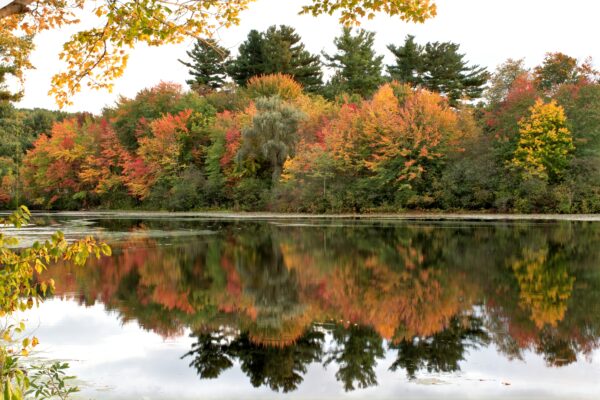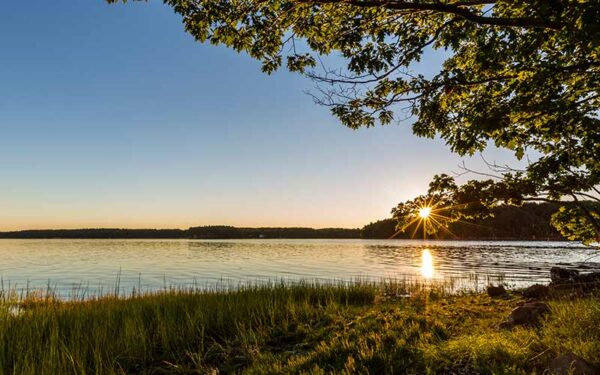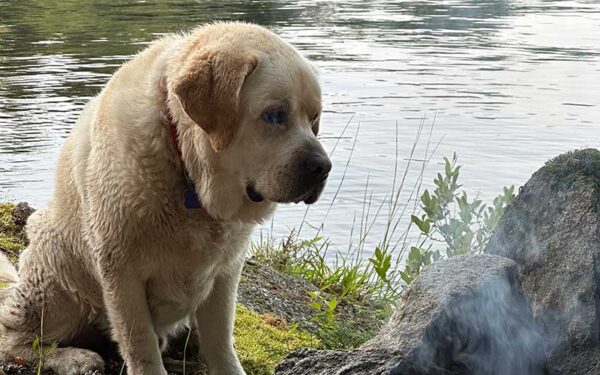Motivated by a desire to better understand his home watershed, Jordan Rowell recruited two friends – Duane Peterson and Ryan Malle – to film his two-week kayaking trip along the 120-mile length of Lake Champlain. Along the way, they stopped to talk to a range of people about the lake’s future.
The result of that journey, the documentary “No Other Lake,” is now screening at various locations across Vermont and New York. We talked with Jordan about what motivated him to embark on this journey and how it changed his view of his hometown lake.
What was the impetus behind this project?
I’ve always been interested in the outdoors – hiking, mountain biking, camping, and rock climbing. I’d been working as a trail builder and in other conservation work when I decided to go back to school at the University of Vermont.
The first class I took was about natural history and human ecology, focusing on the environment of Vermont. It covered some of the environmental challenges here in Burlington, and Lake Champlain really took center stage. Hearing about cyanobacteria blooms, invasive species, and other issues opened my eyes to what’s happening with Lake Champlain.
What was particularly interesting was that our professors brought in different people and stakeholders to talk about these issues. We had farmers, we had wildlife advocates, and we had people from the Abenaki community. And everyone was telling us their side of the story.
So I had this idea: Wouldn’t it be cool to recreate this experience for people and turn it into a film where you heard different points of view about what’s happening to Lake Champlain and what we should do about it? I tied it into my interest in outdoor recreation. I thought going on an adventure on the lake would make the film more interesting.
You grew up near Lake Champlain. How did your view of the lake change through the making of this film?
What it’s all been about is connection. I didn’t realize it, but the lake had always just been something pretty to look at for me. It was always very two-dimensional. As a kid, I would stand on the waterfront with my grandmother and eat French fries at Splash, but I never immersed myself in the lake.
You think about Vermont’s mountains – they’re more accessible, right? I have this deep pride over Camel’s Hump because I’ve spent so much time hiking its different trails and standing at the summit. It’s a cool experience to be down in the valley or a town and look up at its summit and think, “I know what it’s like up there.” I never had that with Lake Champlain because I didn’t have a boat growing up. I never really felt like it was a place for me. Getting out on the lake for this film, I realized, “Oh my gosh, this is a place for me.”
You don’t realize how your perspective is constantly changing until you’re on the water. If you paddle out in the middle of the lake, you feel like you’re at the bottom of a bathtub because you’ve got these big rims of mountains with the Adirondacks on one side and the Green Mountains on the other.
But then, as you paddle along the shore, it’s a much more intimate experience. Every few paddle strokes, the perspective changes, and you see something new. In the woods, you can’t see a lot of the wildlife — they’re hiding. On the lake, there are birds everywhere, and fish are jumping out of the water all the time. So that was the biggest thing for me: Now, the lake feels like a place you can experience, not just a pretty picture.
What do you see as the most significant issues facing Lake Champlain?
Cyanobacteria blooms caused by the excess nutrient pollution in the lake, which has a lot of sources and is very complicated. That’s really the big one, right? Because that’s when the beach closes, water becomes undrinkable, and people can get sick. And the issue that is more prevalent in the south end of the lake is invasive species. Like the nutrient pollution, invasives are also something being introduced into the lake that pushes out native species.
But I think another big challenge facing the lake is that lack of connection. We can be connected to environmental issues and events all over the globe easily. I can donate money to campaigns on all continents. I could be involved in a lot of stuff and feel like my reach is really big – but not impact my immediate surroundings.
I think if we’re going to have a chance at humans having a sustainable relationship with the natural world – whether it be Lake Champlain or the entire globe – then having a deeper connection to this place we call home is where we have to start. And creating that connection through raw experience – how can we get more and more folks to have these powerful experiences without graphs and charts and lectures and meetings.
What is the main message you want people who watch your film to walk away with?
Hopefully, the film can be different things for different people. Our goal is to build a community around a sense of shared stewardship for the lake. So, for the person who is in the know about lake issues, I hope that they watch and want to go beyond the science and data to realize, “Maybe I should go out on the lake and have an adventure and get in touch with what the lake means to me emotionally.”
To somebody else, they might walk away recognizing that they’ve always blamed farmers, for example, for the situation with the lake. They might say to themselves, “Maybe I need to listen to somebody else’s perspective and consider their challenges and circumstances.” And still, for someone else who doesn’t live near the lake or is in a different part of the country – maybe they start to connect more to their local waterway and where their water comes from. Maybe they’re a little more thoughtful and intentional about how they live.
What do you see as the power of film in telling this story?
It’s the power of experiencing the lake. It’s the next best thing to being there. It distills down the messages and the whole experience in 40 minutes. And now we’ve had screenings in New York and Vermont – people have watched it in different places around the country. They’re having this shared experience and becoming part of this shared community, even more so when we can bring people together in the same physical space.
The next step is to try to make those connections last. We’ve hosted tree plantings and other stewardship events in tandem with screenings with the goal of saying, “You saw this movie, you met some people – now let’s go out and do something together.” I think that’s where we can harness the power of film to build a community of stewardship. We’ve seen it happen already, and we’re looking forward to doing more of it.
Learn more about “No Other Lake,” including upcoming screenings. Rowell and his team are also making the film available for free to teachers and have created a toolkit and classroom discussion guide. Teachers can contact them at lakechamplainfilm@gmail.com.



